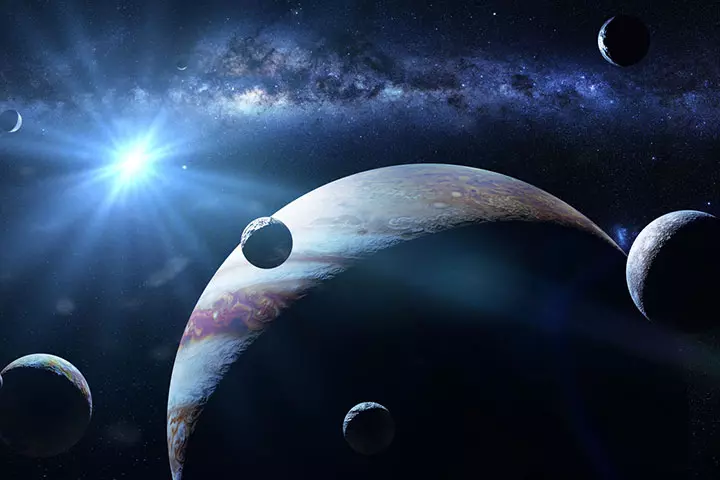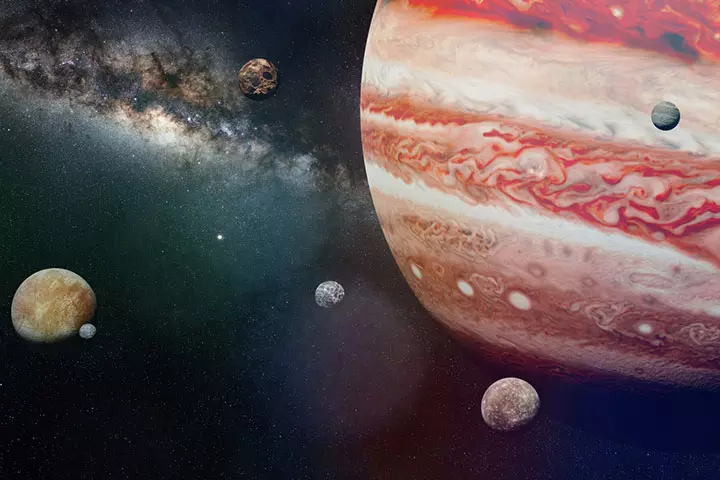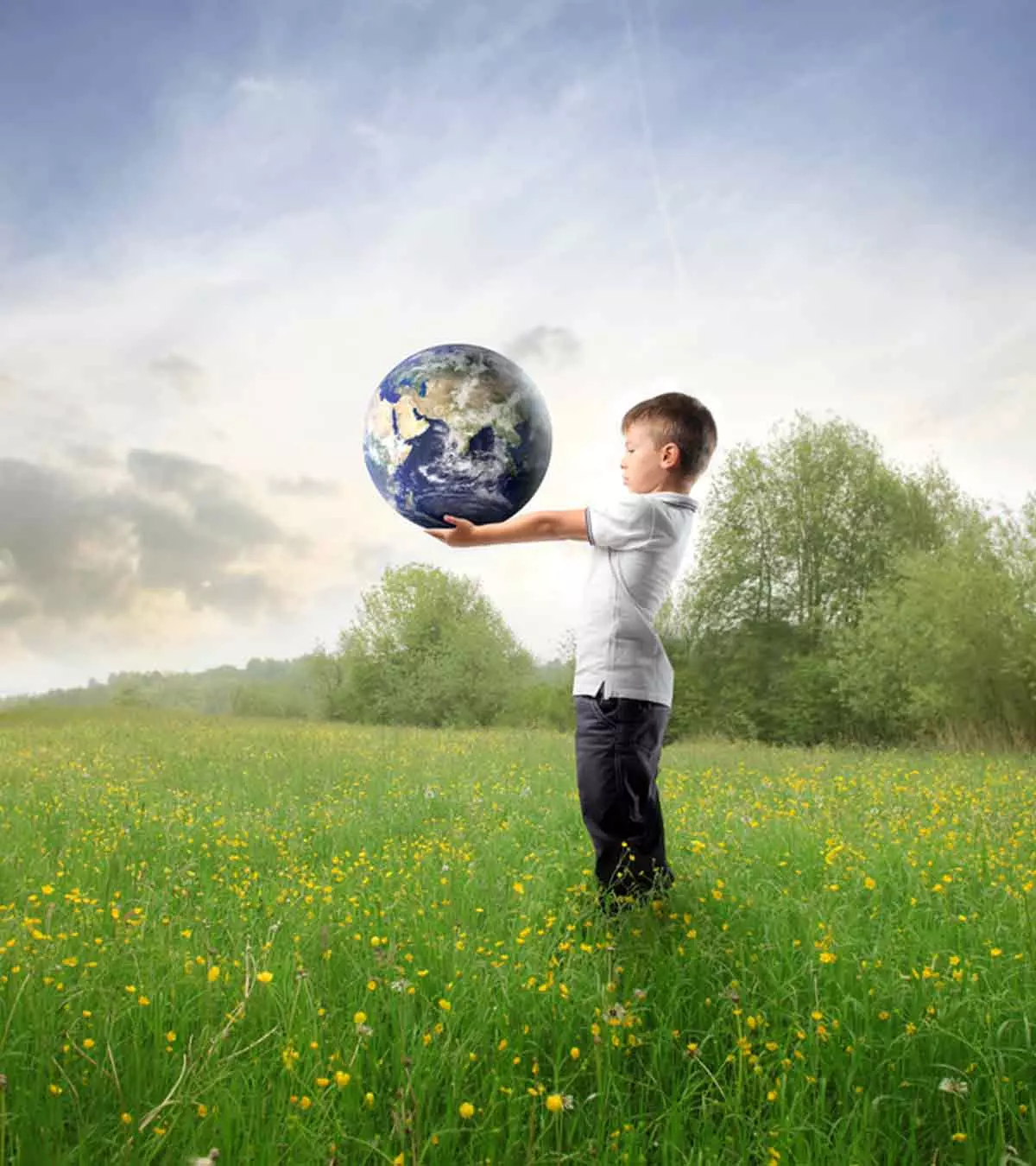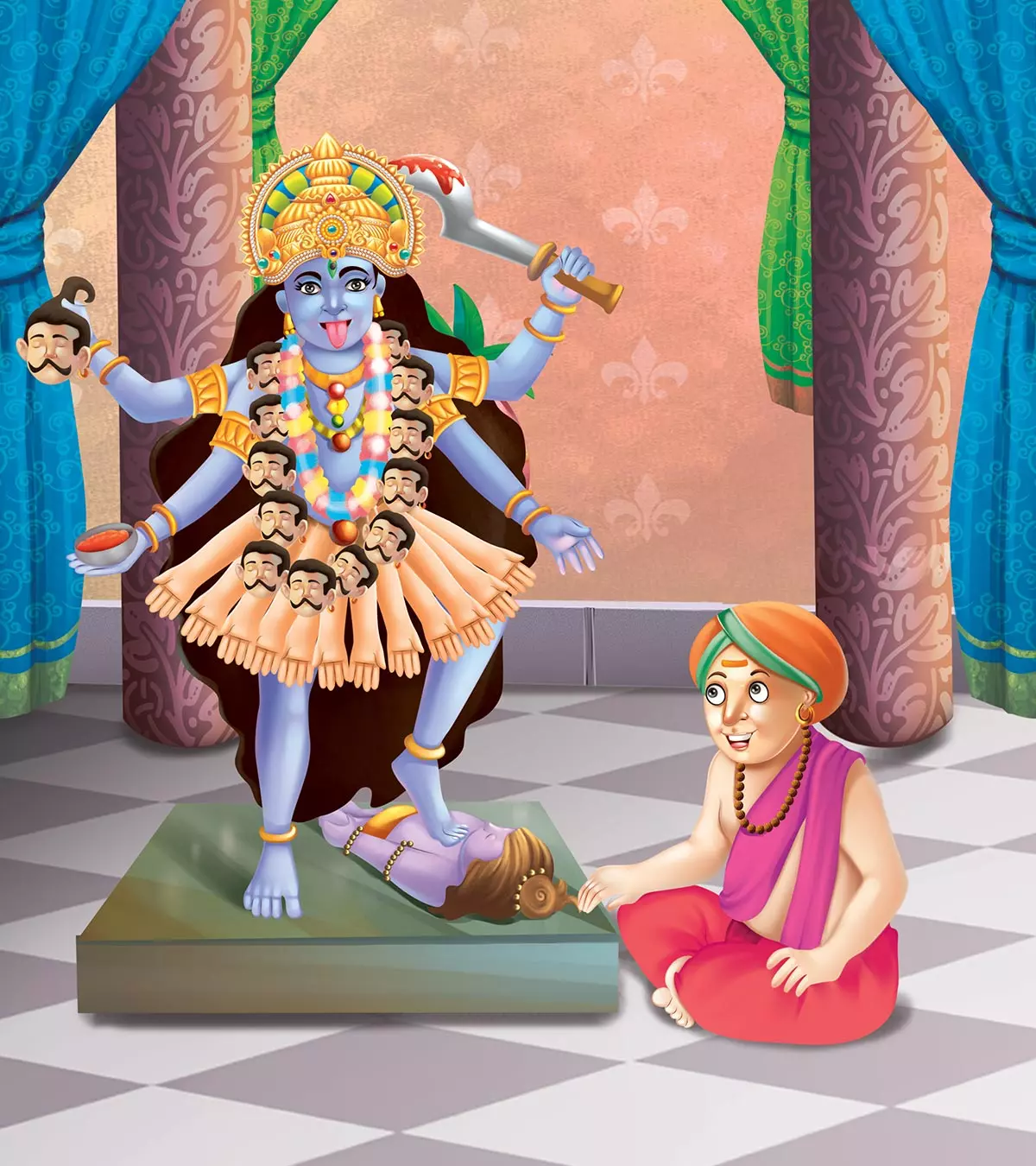
Image: ShutterStock

Jupiter is the fifth planet in the solar system and is considered the king of planets. If you are curious to know more about the planet, here are some facts about Jupiter for kids. It is the biggest planet in the solar system. Like the Sun, it is mostly made of gases that make up the stars. Also, it is one of the fastest-rotating planets, and just like Saturn, it has rings. If you are fascinated by astronomy and are interested to learn amazing facts about Jupiter, keep reading our post. These Jupiter facts will fascinate your children and get them interested in studying planets.
Key Pointers
- Our Earth has a protector. If you are wondering who that is, it’s the planet Jupiter.
- If you wish to land on Jupiter, you cannot.
- Water on Earth is composed of hydrogen and oxygen, but that’s not the case in Jupiter. For more intriguing Jupiter facts, scroll through.
50 Interesting Facts About Jupiter
Some interesting and fun facts about Jupiter are listed below.
- King of Gods: Due to its massive size, Jupiter is aptly named after the ancient king of Roman gods (1).
- Different names of Jupiter: The Babylonians referred to the planet Jupiter as Marduk, the patron God of Babylon city. The ancient Greeks called it Phaethon, meaning a blazing star. The German tribes referred to Jupiter as Thor or Donar.
- Largest planet: Jupiter is the biggest planet in the solar system, about 317 times bigger than the Earth. More than 11 Earths will fit on the planet. Even if the mass of all the planets in the solar system is combined, Jupiter is still about 2.5 times larger! Incredible, isn’t it? (2)

Image: IStock
- Location in the solar system: Jupiter is the 5th planet from the Sun, located in the outer region of our solar system (3).
- Weighing on Jupiter: Have you ever wondered how much you would weigh on Jupiter? Jupiter has 2.4 times more gravity compared to the Earth. If you weigh 100 pounds on Earth, your weight on Jupiter would be 240 pounds!
 Did you know?
Did you know?- The protector of the planet Earth: Jupiter’s intense gravity attracts the rogue asteroids and comets towards itself, which otherwise may hit and destroy Earth or other inner planets. Thank you, Jupiter! (4) (5)
- Jupiter as a slingshot: We do not have rockets with enough power to fling spacecraft to the outer solar system for space exploration. Therefore, scientists use Jupiter’s gravitational force as a mighty slingshot to push spacecraft into the outer solar system (6).
- Slower time: Due to its strong gravity, time is slower on Jupiter. So, every second on Jupiter is about twenty nanoseconds lesser on Earth (7).
- A gas giant: We know that Jupiter is massive, but did you know that it is mostly made of gases? Jupiter is mainly composed of hydrogen and helium gases. The biggest planet does not have a solid surface, just swirling gases and liquids.
- Possibility of life on Jupiter: Since Jupiter is a gaseous planet and does not have a well-defined surface, it is not suitable to sustain life. Sorry guys!
- A day on Jupiter: We all know that planet Earth takes about 24 hours to complete one rotation around its axis. But did you know that Jupiter is the fastest spinning planet in our solar system? Jupiter completes one rotation in just less than 10 Earth hours! Hence Jupiter has the shortest day among all the planets in the solar system.
- The shape of Jupiter: The planet’s shape is that of an oblate spheroid sphere. The fast rotation of Jupiter has resulted in a bulge near its equator. This gives Jupiter its oblate spheroid shape.
- Jupiter’s year: Jupiter takes about 11.86 Earth years to complete one revolution around the Sun.
- Far away from the Sun: Jupiter is at an average distance of 778 million km from the Sun. This is about 5.2 times the distance from the Earth to the Sun.
- Sunlight on Jupiter: While it takes only about 8 minutes 30 seconds for sunlight to reach Earth, it reaches Jupiter in about 43 minutes 20 seconds! That’s more than five times longer!
- Tug of war with the Sun: Jupiter is massive compared to the other planets and exerts its gravitational force to pull the center of mass (called the barycenter) between itself and the Sun. Due to this, Jupiter is the only planet in the solar system with a barycenter outside of the surface of the Sun, which means it technically does not orbit the Sun! (8)
- Owner of many moons: Earth has only one moon, while Jupiter has 79! Of these, 53 have been named, and the other 26 do not have official names yet.

Image: IStock
- Discovery of Galilean moons: In 1610, astronomer Galileo Galilei discovered the first four moons of Jupiter – Io, Ganymede, Callisto, and Europa. However, another astronomer named Simon Marcus claimed he discovered the four moons five weeks before Galileo but did not publish his findings. Although the four moons of Jupiter are referred to as Galilean moons, their names (mentioned above) were given by the astronomer Simon Marcus. Jupiter moons are divided into three groups (9)
- Inner moons: Metis, Adrastea, Amalthea, and These are the closest to Jupiter and are referred to as inner moons (10).
- Largest moons: Io, Europa, Ganymede, and Callisto are the largest moons of Jupiter and are together known as Galilean Moons (11).
- Outer moons: They are smaller and furthest from Jupiter. These moons have irregular orbit paths, and many of them are captured asteroids (12).
- The largest moon: Jupiter’s moon Ganymede is the largest in the solar system, larger than even the planet Mercury! (13)
- The volcanic moon: Jupiter’s moon Io is the most volcanically active in the solar system. Some of its volcanoes are miles high and can be seen with large telescopes on Earth. Due to this volcanic activity, it cannot sustain life as we know it (14).
- The most cratered moon: Callisto is Jupiter’s second-largest moon. It has a higher number of craters compared to any other celestial object in our solar system.
- The moon with a hope of life: The surface of Jupiter’s moon Europa is mainly frozen water. Beneath this, there is evidence that there may be an ocean of liquid water or slushy ice. Scientists have also found water vapor above its surface. Europa could be man’s answer to life beyond Earth. Exciting right?
- Interactions of the Galilean moons with Jupiter: Three of the four Galilean moons interact with each other. Each time Ganymede orbits Jupiter, Europa goes around it twice, and the volcanic Io completes four rounds.
- Irregular moons of Jupiter: The outer moons of Jupiter are segregated into four groups based on similar orbital elements. They are the Himalia group, the Ananke group, the Carme group, and the Pasiphae group. Moons like Themisto and Carpo are not a part of the four groups.
- The rings of Jupiter: In the pictures of our planetary system, you must have spotted Saturn with rings around it. But do you know that Jupiter has rings too? Jupiter has a very faint ring system with three main parts made up of dust particles and bits of rock. Saturn has clear and icy rings. The rings are called the halo ring, the main ring, and a pair of gossamer rings called the Amalthea gossamer and Thebe gossamer ring. This system of Jupiter rings is known as the JovianRings System (15).
 Quick fact
Quick fact- Creation of Jupiter’s rings: Jupiter’s inner moons are responsible for creating the rings of this giant planet. Dust particles from Metis and Adrastea created Jupiter’s main ring, while the gossamer rings are composed of particles from the moons, Amalthea, and Thebe (16).
- Largest ocean: Jupiter has the largest ocean in the solar system made of liquid metallic hydrogen (17).
- Jupiter’s colorful stripes and swirls: Jupiter has unique colors. The colorful stripes and swirls of Jupiter are formed due to cold and windy clouds of ammonia and water vapor floating in its atmosphere, which is made up of hydrogen and helium.
- Clouds: The clouds on Jupiter are only 50km thick. Below these beautiful looking clouds is a layer of hydrogen and helium about 21,000 km thick.

Image: IStock
- The Eye of Jupiter: There is a Giant Red Spot on Jupiter’s surface, shaped like an eye. This big red spot is a huge anticyclonic storm that has continued to rage for more than 300 years. A few centuries back, the Great Red Spot was so massive that 3 Earths could fit in it. The Giant Red Spot has been shrinking, and now, it’s similar in diameter to the Earth (18).
- The necklace of Jupiter: Jupiter has a series of about six to nine white ovals in its southern hemisphere. These are referred to as a string of pearls because of their appearance. They may look like beautiful pearls, but they are a sequence of huge storms that rotate in an anticlockwise direction.
- A large magnet: Jupiter’s magnetic field is about 16 to 54 times stronger than Earth’s. So, it is like a massive magnet. Jupiter’s magnetic field is the strongest in the solar system, after that of the Sun (19)
- Brightness: Jupiter is generally the third brightest object in the night sky after the Moon and Venus. Due to this, it is visible even to the naked eye from Earth.
- The First spacecraft to Jupiter: NASA’s Pioneer 10 was the first spacecraft to visit Jupiter in 1973. Since then, nine spacecraft have been sent to Jupiter.
- A windy planet: Jupiter has strong winds. The wind speed ranges from 192 mph to more than 400 mph. Even the strongest hurricanes on Earth, called five hurricanes, have a wind speed of only up to 175 mph. So, imagine the speed of Jupiter winds!
- Freezing cold clouds: In Jupiter’s clouds, the temperature is minus 145 degrees Celsius (minus 234 Fahrenheit).
- No seasons: All of us know that Earth has distinct seasons. But did you know Jupiter does not have such seasons? The equator of Jupiter is tilted by just 3° to its orbital path around the Sun. For this reason, Jupiter does not have extreme seasons like the Earth.
- Unsuccessful star: Jupiter is made of many of the same materials as stars. If they had been about 80 times more massive than it is, Jupiter might have become a star instead of a planet. Some scientists also refer to Jupiter as a failed star. Imagine if Jupiter were a star – we would have two Suns!
- Traveling to Jupiter: Imagine that you are descending into the massive Jupiter. The thin and cold atmosphere made up of hydrogen and helium, which is present at the top, will get thicker and hotter as you go down due to the extreme pressure. The atmosphere will become a thick dark fog, and then as you enter into the bowels of the planet, the gas will slowly turn into a liquid state. So, there is no demarcation between the sky and the ocean on this planet!
 Did you know?
Did you know?- Generation of heat: Jupiter generates a lot of internal heat because of its mass. This internal heat is so immense that Jupiter emits almost two times the energy it receives from the Sun. This extreme heat is emitted in the form of thermal radiation.
- Radio waves of Jupiter: Jupiter is the biggest broadcaster of radio emissions in the sky. These radio waves are received on Earth, and their noise affects our antennas. They are, however, not audible to humans (20).
- Lightning on Jupiter: You might have seen lightning crackle across the night sky numerous times. But did you know that Jupiter also experiences lightning? Finally, something common with Earth, right? However, on Jupiter, the lightning is more pronounced near the poles, and there is none at the equator, while it is vice-versa on the Earth (21).
- The brilliant light of Jupiter: Stunning light shows in Jupiter’s atmosphere called Auroras can be seen on the south and north poles of Jupiter using NASA’s Hubble space telescope. These electric blue whirls are the brightest auroras in the entire solar system but can only be seen using infrared or ultraviolet sensors (22).
- Collision with a comet: In 1994, the world witnessed the first planet and comet collision. Large fragments of the comet called Shoemaker Levy-9 hit Jupiter for many days. The comet impact created numerous big and dark scars in the giant planet’s atmosphere.
- Juno: A spacecraft named Juno was sent to Jupiter by NASA in 2011. It entered Jupiter’s orbit in 2016 and will remain in space till 2025. Juno’s mission is to look beneath the cloud surface of Jupiter and understand Jupiter’s formation and evolution.

Image: IStock
- The first spacecraft to enter the atmosphere: NASA’s Galileo orbiter collected the first samples of Jupiter’s atmosphere on December 7, 1995. It was designed to study it’s surrounding magnetosphere and satellites. The orbiter survived 58 minutes and managed to penetrate 200 km into the atmosphere before it was destroyed by extreme atmospheric pressure and temperature.
- Trojan asteroids: Jupiter is not alone in its orbit. There are two groups of asteroids that precede and follow it as the planet makes its journey around the Sun. These are known as Jupiter’s Trojan Due to the dynamics of gravity between the Sun and Jupiter, they never crash land into Jupiter (23).
Frequently Asked Questions
1. Is Jupiter hot or cold?
Jupiter has no firm surface. Its center or core has a temperature of about 36,000°F (20,000°C), whereas its clouds have a temperature of minus -280°F (173°C). Jupiter’s average temperature is -238°F (-150°C) (6) (24).
2. How old is Jupiter?
Space experts think Jupiter is about 4.6 billion years old (25).
3. Is there water on Jupiter?
Jupiter doesn’t have water. Its atmosphere has water vapors (26).
4. How did Jupiter get its name?
This is one of Jupiter’s fun facts that dates as far back as ancient Rome where the Romans named planets after their gods. They named the largest planet Jupiter after the king of the Roman gods (27).
Most children love reading about astronomical objects like the planets and other heavenly bodies. Therefore, presenting these facts about Jupiter for kids to yours helps expand their knowledge. So, get together with your children and read about Jupiter’s names, size, weight, rings, moons, and many other interesting things. Space is a giant puzzle. The more mysteries about solar system bodies your children explore, the more questions will arise in their minds. Maybe you’ll want to teach them facts about Mars for kids next to get them to understand our neighboring planet. To quench your children’s curiosity, let them gain knowledge from different sources. Encourage them to share this information with their friends too.
Infographic: Jupiter Missions And Their Goals
The largest planet in our solar system has kept the scientists gripped in curiosity. It is no secret that several attempts have been and will be made to decode the giant gas ball. Share this infographic with your children and enlighten them about the missions to explore the giant planet.
Some thing wrong with infographic shortcode. please verify shortcode syntax
Discover fascinating facts about the planet Jupiter in this educational video for kids. Learn about its size, composition, and unique features.
References
- Jupiter: NASA Solar System Exploration NASA Science
https://science.nasa.gov/jupiter/facts/ - Jupiter Facts Nine Planets
https://nineplanets.org/jupiter/ - Planet Jupiter explained National Geographic
https://www.nationalgeographic.com/science/article/jupiter - How Historic Jupiter Comet Impact Led to Planetary Défense NASA
https://www.nasa.gov/feature/goddard/2019/how-historic-jupiter-comet-impact-led-to-planetary-defense/ - Jupiter’s Influence: Mission Juno NASA
https://www.missionjuno.swri.edu/origin?show=hs_origin_story_jupiters-influence - What is Jupiter NASA
https://www.nasa.gov/audience/forstudents/k-4/stories/nasa-knows/what-is-jupiter-k4.html - Which planet spins the fastest? Cool Cosmos
https://coolcosmos.ipac.caltech.edu/ask/200-Which-planet-spins-the-fastest-#:~:text=Jupiter%20is%20the%20fastest%20spinning - What Is a Barycenter? Spaceplace NASA Science
https://spaceplace.nasa.gov/barycenter/en/ - The Moons Of Jupiter; National Air and Space Museum
https://airandspace.si.edu/explore/topics/solar-system - Jupiter’s Inner Moons Nine Planets
https://nineplanets.org/jupiters-inner-moons/ - Callisto: NASA Solar System Exploration NASA Science
https://science.nasa.gov/jupiter/moons/callisto/facts/ - Jupiter’s Outer Moons Nine Planets
https://nineplanets.org/jupiters-outer-moons/#:~:text=Jupiter%5C’s%20eight%20outer%20moons%20fall - Jupiter Facts The Planets
https://theplanets.org/jupiter/ - Io: NASA Solar System Exploration NASA Science
https://solarsystem.nasa.gov/moons/jupiter-moons/io/overview/#:~:text=IntroductionJupiter%5C’s%20moon%20Io%20is - Jupiter’s Rings: Mission Juno NASA
https://www.missionjuno.swri.edu/jupiter?show=hs_jupiter_story_jupiters-rings - Jupiter’s Ring Formation Theories Confirmed NASA
https://www.nasa.gov/centers/goddard/multimedia/largest/rings.html - Does Jupiter have a solid surface? Cool Cosmos
https://coolcosmos.ipac.caltech.edu/ask/102-Does-Jupiter-have-a-solid-surface- - Hubble Shows that Jupiter’s Great Red Spot Is Smaller than Ever Seen Before
https://hubblesite.org/contents/news-releases/2014/news-2014-24.html - Jupiter: The Largest Planet: GSFC NASA
https://starchild.gsfc.nasa.gov/docs/StarChild/solar_system_level2/jupiter.html#:~:text=Jupiter%20emits%20twice%20as%20much - Radio JOVE From NASA: Tuning In to Your Local Celestial Radio Show NASA
https://www.nasa.gov/solar-system/radio-jove-from-nasa-tuning-in-to-your-local-celestial-radio-show - Juno Solves 39-Year Old Mystery of Jupiter Lightning
https://www.jpl.nasa.gov/news/juno-solves-39-year-old-mystery-of-jupiter-lightning// - Hubble Captures Vivid Auroras in Jupiter’s Atmosphere NASA
https://www.nasa.gov/feature/goddard/2016/hubble-captures-vivid-auroras-in-jupiter-s-atmosphere/ - What are the Trojan Asteroids? We Asked a NASA Scientist: Episode 8
https://www.nasa.gov/solar-system/what-are-the-trojan-asteroids-we-asked-a-nasa-scientist-episode-8/ - The Planet Jupiter.
https://www.weather.gov/fsd/jupiter - How old is Jupiter?
https://coolcosmos.ipac.caltech.edu/ask/103-How-old-is-Jupiter- - Tour of Water in the Solar System.
https://www.usgs.gov/news/tour-water-solar-system - How did Jupiter get its name?
https://coolcosmos.ipac.caltech.edu/ask/97-How-did-Jupiter-get-its-name- - What’s It Like Inside Jupiter?
https://spaceplace.nasa.gov/jupiter/en/
Community Experiences
Join the conversation and become a part of our nurturing community! Share your stories, experiences, and insights to connect with fellow parents.
Read full bio of Beth Sullivan
Read full bio of Sravani Rebbapragada
Read full bio of Harshita Makvana
Read full bio of Praggya Joshi
















